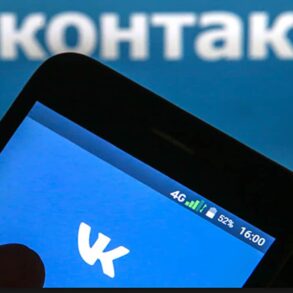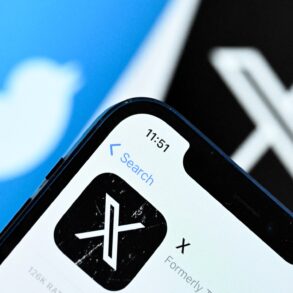
The globe and mail/iStockPhoto / Getty Images
After a work trip to London last month, venture capitalist Peter van der Velden flew home fuming about an investor presentation. Unable to shake his frustration, he decided to vent – on LinkedIn.
His 500-word missive read like palace intrigue. Mr. van der Velden, the founder of Toronto-based life sciences investor Lumira Ventures, was rattled by a presentation given by the Canadian Venture Capital & Private Equity Association, an organization he used to chair.
His post, which talked mostly about how the CVCA hadn’t focused enough on talking up its venture capital firms, ended on a note of exasperation. “OMG. This event had 1 purpose, build engagement & attract foreign capital to Canadian VC general partners & companies, & the CVCA CEO just threw the entire sector under the bus,” Mr. van der Velden wrote.
In an e-mail to The Globe and Mail, Mr. van der Velden said he aired his frustrations because “this situation felt like one that warranted a different approach since using the internal channels seemed completely ineffectual.” (The CVCA, for its part, said it gives “numerous opportunities for members to share candid feedback – at the board level, in committees, through surveys, and in one-on-one discussions.”)
For most of its existence, LinkedIn was a place for suits to peacock about their professional accomplishments. They could make virtual connections on the platform as well, but the value of those were debatable. (One user would send another an invitation, and after it was accepted, they wouldn’t say a word to each other online.)
Yet since the COVID-19 pandemic, LinkedIn has gone through a revolution. What started as a place for white-collar workers stuck working from home to interact with one another has blossomed into a hub for business insights. And after Elon Musk bought Twitter (now X) and removed most of that app’s guardrails, the resulting exodus has led to LinkedIn’s engagement skyrocketing.
On X, anyone can have influence simply by purchasing a blue check mark, which gives them good promotion in the app’s algorithm. And because users don’t have to disclose who they are, they censor themselves less. LinkedIn, on the other hand, has historically been seen as a place for civil discourse. Users post under their real names, and they openly identify where they work. But even with that transparency, as the social platform grows, its tone and content are changing. LinkedIn is no longer just about networking or pleasantly sharing accomplishments – it’s at risk of becoming just another place for clickbait and, sometimes, unhinged rants and accusations.
To someone outside the corporate world, LinkedIn’s popularity might sound ridiculous. LinkedIn? Seriously? But the statistics don’t lie. The platform now has 24 million members in Canada, and according to Pew Research, 30 per cent of adult Americans say they use it. That rivals TikTok’s 33-per-cent usage, and ranks higher than Reddit and X. (The equivalent Canadian stats are harder to come by, but those that exist have mirrored the American data.)
LinkedIn’s sway is harder to measure, but on Bay Street, its pull is real. Over lunch, executives, bankers and lawyers will tell you about posts of theirs that did well, as if they’re influencers, and it’s become common for one professional to send another a LinkedIn message instead of an e-mail.
Some of LinkedIn’s tonal changes stem from its own updates. Because TikTok users have been posting more videos with career and financial advice, LinkedIn is fighting back by replicating some of TikTok’s features, such as a video carousel that displays short clips with titles such as “Get THOUSANDS off your next car.” LinkedIn is also experimenting with games.
User-generated content is also evolving. LinkedIn used to be a politics-free zone, but federal Conservative party leader Pierre Poilievre now posts multiple times a day, and political issues have blown up on the platform, including opinions on Ottawa’s capital-gains tax hike this spring.
Even posts that aren’t political to begin with can be torqued that way, sometimes with the type of outrage and name-calling more commonly seen on X. “If Tiff Macklem cuts rates – that’s LinkedIn worthy,” said Duncan Rowland, the founder of Toronto-based financial technology company Migrations.ml and an avid LinkedIn user. But, he added, “people are then going to turn that into, ‘Chrystia Freeland is an idiot.’ ”
(When asked about the changes in tone and content on its platform, LinkedIn declined to comment).
Promotional corporate content is also now a regular feature of the LinkedIn feed. Executives post pictures of themselves at internal town halls and comment on how energized everyone in the room allegedly felt, then their direct reports follow up with posts that offer “key takeaways” from the CEO’s speech, which was usually written by someone in the communications department. The LinkedIn posts themselves are also often written by the communications team.
Over all, the platform is losing its decorum. What used to be a safe space for civil discourse is turning into theatre – sometimes related to topics that aren’t all that relevant to business.
Complaining about bike lanes, for instance, has become big on LinkedIn, and the posts can garner angry comments. Recently, below a post about limiting bike lanes, Jim Trak, who retired from the commercial real estate industry, wrote: “Don’t listen to the BS – get out & look for your selves. Is this insanity worth it??? NO!!!! Think for yourself – wake-up & open your eyes.”
In an e-mail to the Globe, Mr. Trak explained that he can “be more direct as I am totally unencumbered by personal or political aspirations,” adding that he wants the business community to adopt “common sense positions that will help the greater TO & its residents.”
LinkedIn founder Reid Hoffman in May, 2023. LinkedIn now has more than one billion members and has made $16-billion in revenue over the last 12 months.CLARA MOKRI/The New York Times News Service
When LinkedIn was starting out, around 2005, its business plan was pretty simple: Allow users to create a professional profile of record, then get recruiters to pay for access to extra information about this client base.
After the company went public in 2011, founder Reid Hoffman started talking about LinkedIn in lofty terms. One day, he told The New Yorker, it would list every job everywhere and provide a profile for every member of the global work force, including blue-collar workers. The company also started experimenting with other sources of content, including online educational material and thought leadership pieces. CEOs were recruited to share life stories and business wisdom.
For all its ambition, by 2016, LinkedIn was looking a bit listless and its share price fell 40 per cent in a single day. With its growth prospects in doubt, Microsoft Corp. swooped in with a US$26-billion takeover offer. Its expansion since has been explosive. LinkedIn now has more than one billion members – most of whom live outside North America – and its revenues over the past 12 months totalled $16-billion, up from $3-billion a year at the time it was acquired.
LinkedIn still makes most of its money from helping companies hire or train people – about $7-billion in annual revenue – but it also has a big B2B advertising business that brings in $5-billion a year. “If you want to target a set of CFOs that live in San Francisco that are in the health care industry, there’s no better place to do that than on LinkedIn,” chief executive Ryan Roslansky said at a June investor conference.
The key for LinkedIn is making sure those CFOs stay engaged, which is why it likes having so much content, which then fosters connections and conversation. “At the core, we run a social network,” Mr. Roslansky said.
LinkedIn now has 24 million members in Canada, and according to Pew Research, 30 per cent of adult Americans say they use it.Justin Sullivan/Getty Images
The platform’s reach can be tough to appreciate until you try posting. Jon Shell, chair of Social Capital Partners, had a LinkedIn account for years but never really did anything with it. If anything, he said in an interview, he used to roll his eyes at how some people would boast about their professional accomplishments on the platform. But in the first months of the pandemic, Mr. Shell posted about his fear that white-collar workers would skate by while small-business owners and those who relied on in-person events would face existential struggles – and it blew up.
“I was just amazed by how much engagement there was,” he said. “It completely changed how I used the platform.”
Social Capital Partners has been advocating for changes to Canadian policy that would make it easier for workers to acquire ownership stakes in the businesses they work for, and Mr. Shell said LinkedIn was incredibly helpful in that campaign – both for finding people who could help make it happen, and for spreading the word. As of this spring, Employee Ownership Trusts (EOT) are now established in Canadian law.
But often, the motives of LinkedIn’s most active users are harder to decipher. Their posts are sometimes obviously promotional, and others are just random rants, making you wonder if they have an agenda, or just like hearing themselves talk.
With 49,000 followers, Jon Love, the executive chair and founder of commercial real estate investor KingSett Capital, is one of these power users. On LinkedIn, he can come across like a curmudgeon, sometimes referring to news stories that question the value of commercial real estate as “clickbait.” But over the phone he comes across as quite warm. He’s not just ranting for the sake of it, he explained. “People have ready access to politicians’ views. … I think it’s important for business leaders to speak up.”
And while he likes to give his take, the source material he’s commenting on comes from reputable news outlets. His goal, he explained, is to “convene a civil discussion about important public policy issues.”
The question is whether that’s getting harder to do. Like other social-media networks before it, LinkedIn risks turning into an echo chamber. CEOs might be encouraged by 800 likes on something they post, but their employees have it in their self-interests to show their support. Who knows how much it will matter during the next performance review.
And for every smart insight, there’s an aggressive humblebrag disguised as advice: “Last year, I sold my business to the world’s largest private equity firm. … There are a couple of things I wish I had done to make it easier.” Not so long ago, the post would have been a brief announcement about the sale with an innocent message such as, “Can’t wait to start our next chapter.”
Mostly, though, the platform’s tone is shifting. “There’s just more negativity,” says Mr. Shell. During the capital-gains saga this spring, “people were losing their minds.” (LinkedIn’s highest proportion of users, by far, are those who make $100,000 or more a year, according to Pew.)
At the same time, there’s a growing homogeneity. LinkedIn is heavily promoting what it calls “Write with AI,” a tool that will rewrite users’ bios and even create posts for them. This content often relies on the same formulas, which is why it’s so common to see this type of structure:
“I told my friends one day I’d be rich.
They laughed at me.
But I invested in myself. Here’s how I got rich.”
Ultimately, it means there’s less authenticity online, which contradicts the early purpose. “What we went to social media for in the beginning was original human thought,” said Kyle Chayka, a staff writer with The New Yorker whose latest book, Filterworld, studies how the tools for digital life are reshaping culture.
Kyle Chayka, a staff writer with The New Yorker. His latest book, Filterworld, studies how the tools for digital life are reshaping culture.Gregory Gentert/Supplied
And while it used to be that the digital and real worlds were seen as separate – “Twitter isn’t real life” was a popular saying – what happens online keeps bleeding into everyday life. Online engagement isn’t just shaping how people post, or how they talk to each other, Mr. Chayka said, “it shapes how they think.” This melding of the two worlds is the reason, for instance, that the lie about U.S. immigrants eating dogs and cats in Ohio appeared in a presidential debate last month.
When social media started out, it was seen as a place to build community, but its usefulness in that regard isn’t so clear any more. Tiffany Heimpel, a vice-president at Hireguide – a human-resources company created to prevent bias when hiring – has been using social media for close to 15 years. She remembers the halcyon days when she’d go to “tweet-ups,” where a group of people who followed each other on Twitter would get together in real life.
It feels like eons ago. Today, the U.S. surgeon-general warns that social media can cause symptoms of depression and anxiety in teenagers and that it’s addictive.
Lately, Ms. Heimpel has focused on sharing positive and uplifting stories on LinkedIn, and she’s wondered if it’s not just teenagers who struggle because of their social-media consumption. Judging by how some people she knows use social media, “it’s basically adults doing the same thing.”
Yet as social media’s worth gets debated, LinkedIn still stands out as one of the most civil platforms. For now, at least.
Like Mr. Shell, Joseph Lavoie, a partner at Crestview Strategy, is a recent convert and he’s stunned by the possibilities. “It’s just amazing to me the quality of content you can get out of LinkedIn,” he said. But he adds a caveat: “If you follow the right people.”








